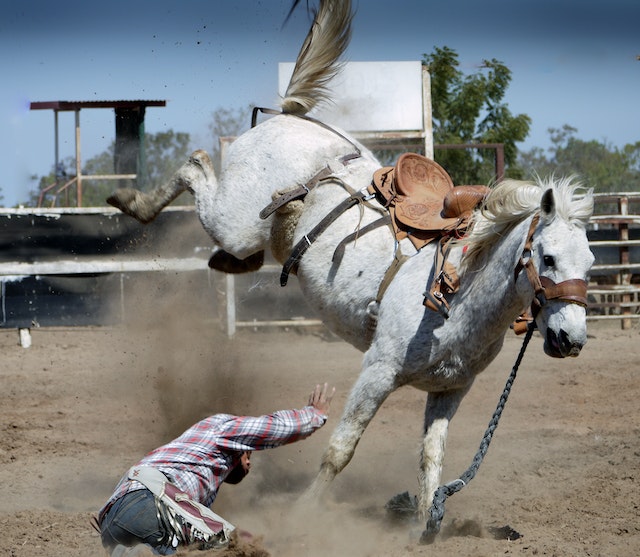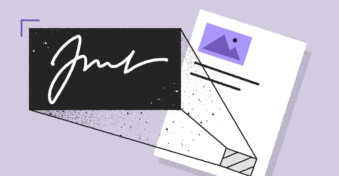As an equine business owner, it is important to prioritize the safety of your participants and protect your business from potential liability. A Release of Liability Waiver, also known as an equine liability waiver or horse riding liability waiver, is a crucial tool for accomplishing this.
These waivers, just like many other types of waivers, inform participants of the inherent risks involved in equine activities and the limits of their responsibility in the event of injury or death. By signing the waiver, participants assume responsibility for their own safety and release your business from liability for any injuries or damages that may occur.
In addition to discouraging lawsuits from injured participants, a well-drafted Release of Liability Waiver can also support your defense in the case of death. In this guide, we will provide tips from a lawyer on how to draft a riding stable liability waiver that effectively protects your business.

What Is Equine Liability Waiver?
An equine liability waiver, also known as an “equine liability release” or “horse riding liability waiver,” is a legal document that is often used by horse riding schools, stables, and other equine-related businesses to protect themselves from liability in the event of an injury or other damage to the participant while engaging in equine activities.
The purpose of the waiver is to release the business from responsibility for any injuries or damages that may occur as a result of participating in horse riding or other equine activities and to hold the participant responsible for their own safety and actions while participating.
Why Do You Need Equine Liability Waiver?
Equine liability waivers are necessary to protect businesses and organizations that offer equine activities, such as horse riding schools and stables, from potential liability if a participant is injured or experiences damage during an equine activity. These waivers require participants to acknowledge the inherent risks involved in equine activities and assume responsibility for their own safety and actions. This helps to ensure that participants are aware of the risks and are more mindful of their safety and the safety of others while participating in equine activities.

What Makes Equine Liability Release Enforceable?
To be enforceable, an equine liability release must be drafted appropriately and comply with the laws of the jurisdiction in which it is used. In general, an equine liability release will be enforceable if it meets the following criteria:
- It is in writing: An equine liability release must be in writing and signed by the participant.
- It is clear and concise: The language of the release should be easy to understand and should not contain any ambiguous or confusing terms.
- It is voluntary: The participant must agree to sign the release of their own free will and without any coercion or undue influence.
- A competent adult signs it: The participant must be an adult (18 years or older) and must have the mental capacity to understand the release and its consequences.
- It is not against public policy: The release cannot be used to waive liability for gross negligence or intentional misconduct.
If an equine liability release meets these criteria, it will likely be enforceable in a court of law.
Tips to Draft a Riding Stable Equine Liability Waiver
Here are some tips to consider when drafting an equine liability waiver for a riding stable:
- Use clear and concise language: The language of the release should be easy to understand and should not contain any ambiguous or confusing terms.
- Explain the risks: The release should clearly outline the inherent risks involved in equine activities, such as falls, injuries, and damage to equipment.
- Include a waiver of liability: The release should include a valid waiver of liability that releases the riding stable from responsibility for any injuries or damages that may occur as a result of participating in horse riding or other equine activities.
- Require a signature: The release should require a signature from the participant to confirm that they have read and understood the terms and conditions of the release.
- Include a disclaimer: The release should include a disclaimer stating that the riding stable is not responsible for any injuries or damages that may occur as a result of participating in equine activities.
- Consult with an attorney: It is important to consult with an attorney to ensure that the release is properly drafted and complies with the applicable laws.
By following these tips, you can draft an effective and enforceable equine liability waiver for your riding stable.
Final Thoughts
In conclusion, equine liability waivers are important tools for equine businesses to protect themselves from liability in the event of an injury or damage to a participant during equine activities. These waivers require participants to acknowledge the inherent risks involved and assume responsibility for their own safety and actions.
It is important for businesses to draft these waivers carefully and to consult with an attorney to ensure that they are properly drafted and compliant with the relevant laws. To make the process of creating, signing, and managing liability waivers easier, businesses can use the free equine liability waiver form service – PandaDoc Waivers.
FAQs
-
Equine personal liability cover is a type of insurance that provides protection for individuals who own, use, or work with horses. The purpose of this insurance is to cover the policyholder for liability claims made against them if someone is injured or experiences damage as a result of the policyholder’s actions or ownership of horses.
This can include injuries sustained from riding or exercising the horse, injuries sustained from accidents involving horses, or even damage to personal property caused by a horse. The coverage provided by an equine liability insurance policy varies based on the terms of your specific policy. -
It is generally recommended to keep liability waivers on file indefinitely.
Equine liability waivers are legal documents that may be used as evidence in the event of a liability claim being made against a business or individual. It is important to keep these waivers on file in case they are needed as proof that a participant agreed to assume the risks of an equine activity and to release the business or individual from liability.


